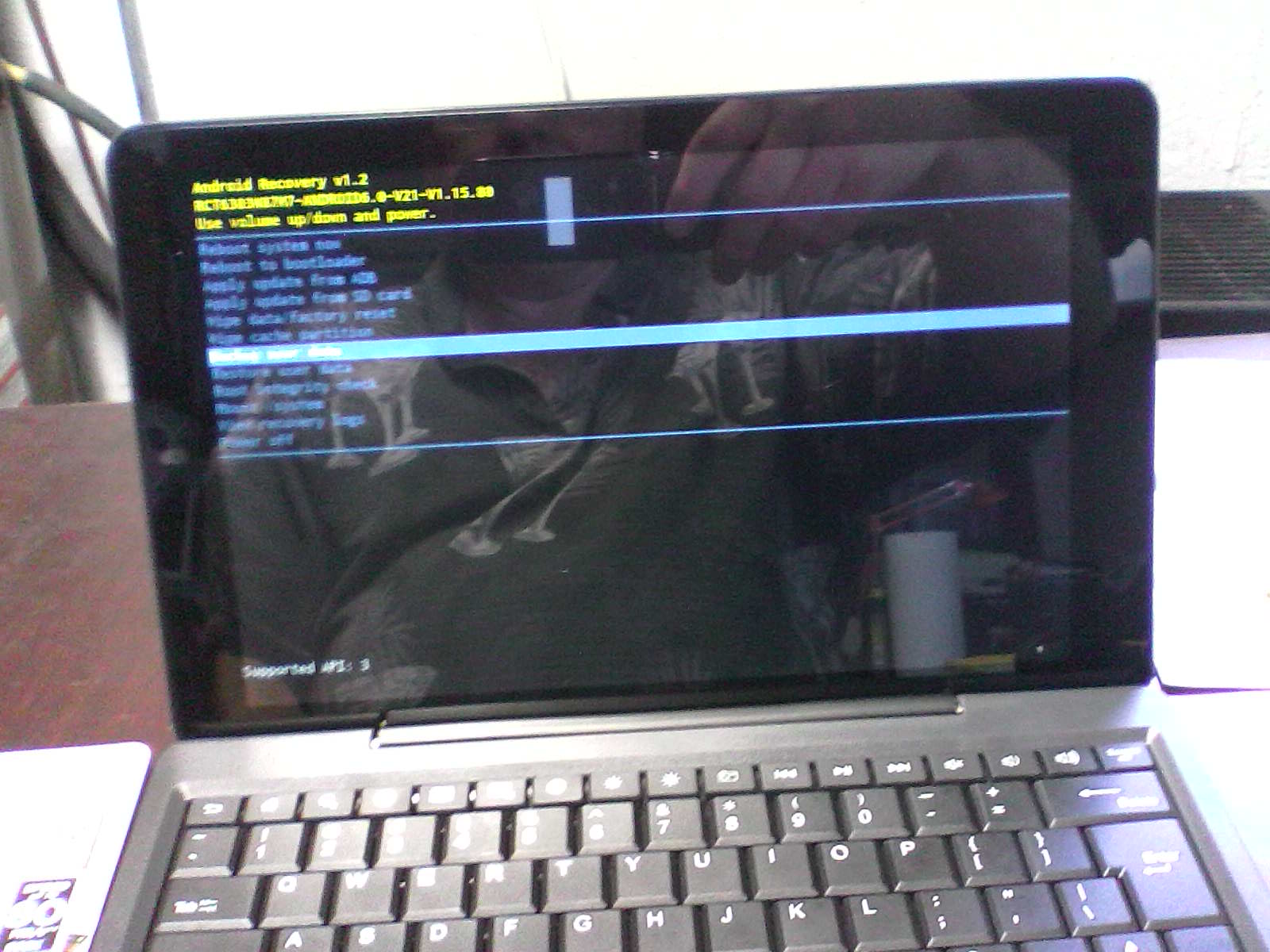The Sacrificial Lamb

Eventually, if time allows, I will attempt to cross compile both programs to off-the-shelf Android and Raspberry Pi targets. You have already seem the Raspberry Pi target but for the Android target I chose the RCA Viking Pro as our sacrificial Lamb. Yes, it is a mortal sin to purchase anything from Walmart. Most likely I just enriched North Korea via China via Walmart somehow.
I used this for several hours setting email up for both a client site and myself. I even used it to type some messages in a message group finding the Chrome interface for groups.google.com to well and truly suck. When replying to messages it didn’t offer any obvious method of quoting the message I was responding too or selecting text from the message I wanted to respond to so it could be pasted in. Highly frustrating. A definite design flaw. I can do that with both Opera and Mozilla Firefox on any desktop. It is a browser interface after all so they shouldn’t hide all of the text editor features.
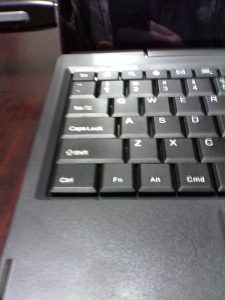
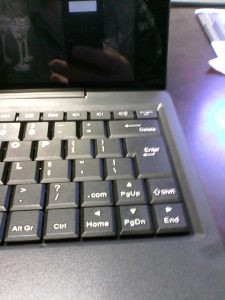 The battery life seemed to be quite good. I had the wifi enabled for several hours and the battery indicator barely shrunk. The chicklet keyboard keys are really too tiny for any serious typing and the buffoon who put the touchpad in the front where most typists try to rest their hands briefly possesses a legendary inability at design functionality.
The battery life seemed to be quite good. I had the wifi enabled for several hours and the battery indicator barely shrunk. The chicklet keyboard keys are really too tiny for any serious typing and the buffoon who put the touchpad in the front where most typists try to rest their hands briefly possesses a legendary inability at design functionality.
Viking Pro Hardware Design Flaws
While I’m on the topic of hardware design flaws, take a look at the shift keys. On the left is a near full sized shift key exactly where it should be. On the right the shift is that little thing way over against the edge. People who are used to typing will constantly find themselves hitting the up arrow key (when they aren’t bumping the touchpad) totally hosing their document.
Yes, I understand that for ease of assembly they wanted a rectangular keyboard instead of a notched one like I see on some other computers, but a notched one would have dramatically improved this unit.
RCA Viking Pro Backup Options
Before sacrificing this child I opted to look into backup options. They basically suck. To me, one who started out in computer operations working with real computers, backup is just that, bare metal. Ordinarily I get a copy of Drive Image from TeraByte Unlimited, make a bootable CD or USB thumb drive and perform full bare metal backups.
The Linux version is so cheap I don’t even bother asking about upgrades. Sometimes I go a couple years but usually I buy a new copy a few times per year. Yes, I make safety copies of things onto other USB drives, but if I’m working, at least once per week I do a full image backup.
I’ve even bought this software for client sites. They knew they “should” backup, but projects are always pressed for time and they weren’t too keen on the time it would take to backup until I told them to just kick it off on their way out the door at night . . . then a hard drive failed and suddenly that backup time seemed totally acceptable. They didn’t have a solid under 2 hours work instruction for recreating a development environment. The sub 40 minute restore process (including new drive installation) seemed pretty great then!
Recovery Mode
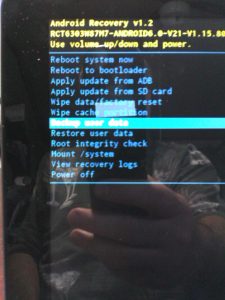 Take a good look at the image. This is the screen you see when you boot this device to recovery mode. You press and hold the power button and the volume “+” button until the RCA logo screen appears then let go. Contrary to other things you find on-line I never saw an android on his back.
Take a good look at the image. This is the screen you see when you boot this device to recovery mode. You press and hold the power button and the volume “+” button until the RCA logo screen appears then let go. Contrary to other things you find on-line I never saw an android on his back.
I let the RCA Viking Pro splash screen sit there for about 4 seconds then hit both the power and volume “+” button again to get to that screen. You can use the arrows on the keyboard to navigate. While it is impossible to read in that photo, I arrowed down to “Backup user data.” (sorry about the photo quality, enlarging the picture does help some.)
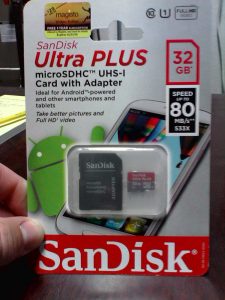
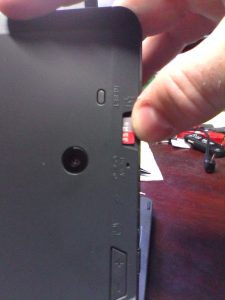
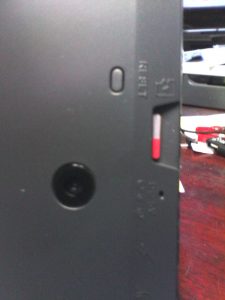
Before hitting enter I dug out a 32GB micro SD card and inserted it into the almost hidden spot between the camera and reset button next to where the power plugs in. Be sure it is fully seated. After you hear the click it will look like the last photo.
Be sure you have the colored side facing out as shown. After you hit enter it spits up a little message about the file name being used and the fact it is being written to the SD card. I didn’t try it, but am told it will also write to a thumb drive. Since the port is USB 2.0 though you might want to use a Micro SD card.
Not a Bare Metal Backup
This is not a bare metal backup. If you need to restore you will need to reset the RCA Viking Pro to factory (or burn a factory image onto the device which is something I don’t want to try just yet) then re-install any apps you might have installed. Google wants to own you here. I received quite a few messages about enabling Google cloud this and that for app backup and recovery. I don’t want Google owning or knowing that much so I opted out. If you want more information on backup apps you can start here. Assuming I don’t run out of time I will get around to finding the Android SDK for 64-bit Linux and hopefully publish a Linux version of these instructions.
Don’t Trust Google
So, at this point I have a few files I copied over to the sacrificial lamb along with a pair of email accounts but no contacts yet. The Google mail application is accessing my IMAP server and I’m not certain I want Google having all of my contacts. A quick search showed there was not yet a full version of Thunderbird for Android. At some point I will probably pull my personal account from the built in mail app and install K-9 or one of the other apps listed here or one of these. Of course that assumes we don’t sacrifice this unit beyond recovery.
Our next step is to dig into the app which claims to get an actual Postgresql server up and running on the android device. After that I need to get a Postgresql server running on my Raspberry Pi then local compile the current xpnsqt2 application on the Pi so we know everything worked before we messed with cross compiling.
Keep your disasters small and create them in a specific order.
Related posts:
Where Did My QDebug Output Go?
